Goheal: How long can the acquisition of controlling rights last? One article to understand the future trends and the path to bre
"Change is the universal truth of the world." If the acquisition of controlling rights in the past was a tango danced by capital on the profit and loss statement, then now it is more like a battle about "technological sovereignty". In the torrent of AI, companies are no longer satisfied with being shareholders with cash flow, but hope to become the controller of the "technical life gate". Controlling rights have never been so hot and so complicated.
American Goheal M&A Group
Standing at the vent of the wind, Goheal observed such a turning point: the traditional equation of "control = power" is being deconstructed and reconstructed by technological logic. We believe that in the next three years, the acquisition of controlling rights will not die out, but will become sharper, more secretive, and more worth betting on.
1. The M&A script has been turned over: from market share to technological sovereignty
Remember the old saying "become bigger and stronger"? In today's AI-driven era, this is no longer the only script for acquisitions. Head companies have "turned around" one after another, no longer just grabbing users and markets, but going straight to the underlying technical architecture.
Alibaba has made a bold statement: AI and cloud computing capital expenditures in the next three years will exceed the total of the past ten years; and open source giants such as DeepSeek are rapidly iterating, which on the surface lowers the threshold for technology acquisition, but in fact quietly sets up new barriers. It is true that algorithms are open source, but vertical data assets, computing resources, and application scenario know-how are still "high ground" that can only be occupied and not created by oneself.
In this new "positioning war", Goheal constantly reviews the latest cases and sees that three M&A paradigms are being accelerated by capital:
Acquisition of technical infrastructure is in full swing, from Uke to Sugon, computing power has become the next oil;
Scenario-based AI capabilities have become golden targets, such as Turing, which leads in government public opinion analysis capabilities, and its advantages in data availability and algorithm adaptability have become the first choice for enterprises to "make up for AI shortcomings";
Data assets have become a new valuation engine. Companies like Focus Technology, which have massive transaction and user behavior data, have attracted a lot of cross-border capital to target their controlling rights due to their scarcity and irreplaceability.
Don't get me wrong, this is not the climax of financial skills, but the confluence of technology.
2. Technology M&A will dominate 60% of transactions, and AI will start the "final battle" of acquisitions
Goheal systematically analyzed the trends between 2025 and 2028, and found that technology-based M&A is changing from "participants" to "protagonists". According to the forecast of China Research and Consulting, AI-related M&A will grow at a compound annual growth rate of 35%, far surpassing the 10% growth rate of traditional M&A.
Companies no longer care about how many factories and direct stores you have. What they care about is:
Is your algorithm compatible with domestic computing power? (For example, the information adaptation problem of Ascend and Hygon)
Has your AI product deeply penetrated the business scenario? (Alibaba Cloud's digital marketing support for Ruoyuchen has verified the effect)
Have you "contributed code" to the open source ecosystem? (DeepSeek's active developer community has become the underlying logic of valuation doubling)
We noticed that the trinity of "domestic substitution + scenario closed loop + open source activity" is becoming the core fulcrum of future technology acquisition valuations.
3. Don’t be blocked by antitrust: The “secret gameplay” of controlling stake acquisition in the AI era
On the one hand, the temptation of technology is getting stronger and stronger; on the other hand, the regulatory stick is also swinging more and more fiercely. Global regulators are no longer just focusing on “share monopoly”, but on “data monopoly”. This makes the gameplay of controlling stake acquisition more subtle:
Smart companies are beginning to turn to the new routine of “phased equity acquisition + technology joint venture”. We see that more and more leading e-commerce platforms have given up directly controlling AI service providers and instead adopted a model of equity participation + exclusive technology authorization to bypass the compliance “red line”; cloud computing giants simply form a “computing power alliance” to achieve resource sharing and avoid the review pressure brought by mergers and acquisitions.
Several projects that Goheal has participated in recently also reflect this transformation-we found that when “controlling rights” are no longer the only goal, “technical sovereignty + data scheduling rights” have become the most valuable bargaining chips on the acquisition negotiation table.
4. The new three axes of controlling stake acquisition: from arbitrage to integration, from control to alliance
Don’t fantasize about getting rich overnight by relying on “financial leverage” to buy low and sell high. In the AI era, there are three things to consider when acquiring controlling stakes:
First, "vertical filling" of technology gaps.
In cooperation with several large industrial funds, Goheal found that some seemingly marginal computing power manufacturers are becoming the lifeblood of "large model" expansion. For example, the improvement of Haiguang Information's energy efficiency ratio in reasoning scenarios directly leveraged the valuation doubling space.
Second, "horizontally connect" the open source community.
If an enterprise wants to acquire an AI target, it must first see whether the other party is a "contributor" to the open source ecosystem. DeepSeek's developer ecosystem is not only an algorithm incubator, but also a talent pool. Acquiring a technical team is equivalent to buying a "living" ecosystem.
Third, "pre-governance" compliance risks.
Don't forget that the "Generative AI Service Management Measures" have made it clear that the platform must assume regulatory obligations for the boundaries of data use. Goheal suggested that AI ethics review clauses be preset in the transaction agreement, and at the same time, the layout of privacy computing technology companies should be accelerated to fill in risk control capabilities in advance.
In the final analysis, the success of mergers and acquisitions no longer depends on how much money you spend, but on whether the puzzle you acquire can be put into your own technology ecosystem closed loop.
5. Finally, we should ask ourselves: How long can the acquisition of controlling rights last?
Looking back at the past ten years, from the control of major shareholders to leveraged buyouts, to PE linkage and betting agreements, the underlying color of each M&A boom is the temptation of "asset appreciation". Today, the temptation is still there, but the appearance has changed.
The acquisition of controlling rights has not withdrawn from the stage of history, but is quietly transforming. It is no longer as simple as fighting for control, but fighting for the ticket for technology channels, data entrances, and model exits. In the ocean of AI capital, whoever owns the closed loop of data-algorithms-computing power owns the future.
Goheal believes that the truly smart acquisition of controlling rights is not to control a company, but to control the dividend cycle of a technology iteration. In the future, we will continue to explore new models: perhaps an alliance mechanism for sharing computing power, perhaps a rights structure of Model-as-a-Service, or perhaps a more complex and decentralized "governance federation".
Goheal Group
So, the question is: if controlling is no longer the only option, are you ready to use what to bind the core technology of the future?
[About Goheal] Goheal is a leading investment holding company focusing on global mergers and acquisitions. It has deep roots in the three core business areas of acquisition of controlling rights of listed companies, mergers and acquisitions of listed companies, and capital operations of listed companies. With its profound professional strength and rich experience, it provides companies with full life cycle services from mergers and acquisitions to restructuring and capital operations, aiming to maximize corporate value and achieve long-term benefit growth.


